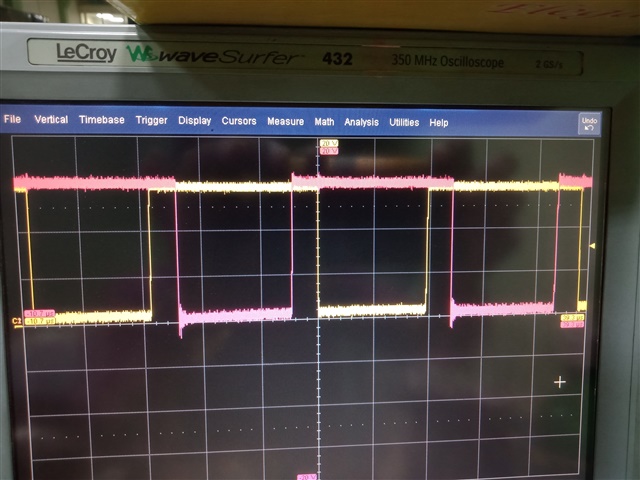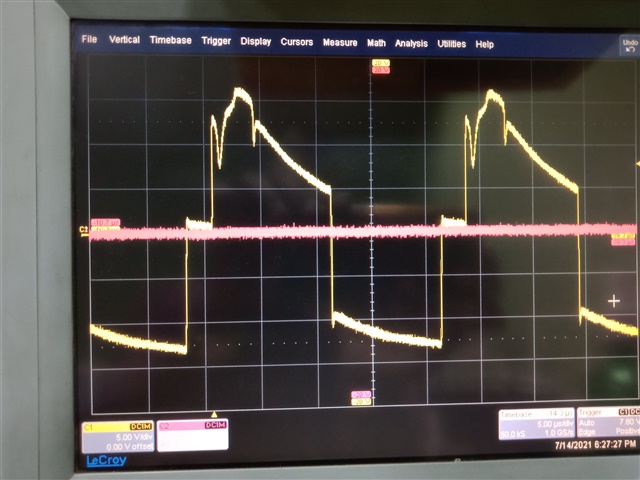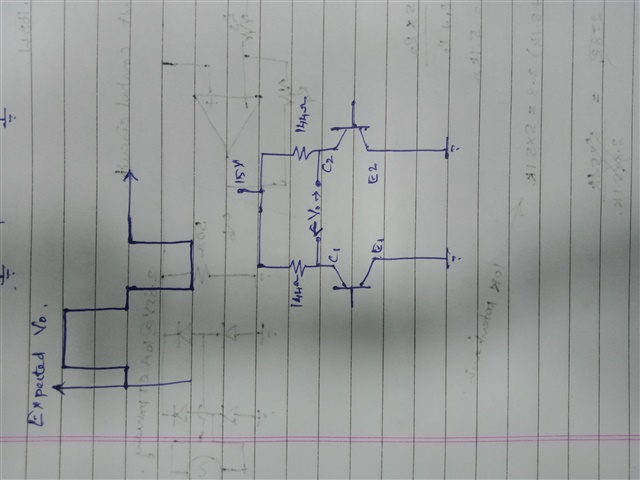Other Parts Discussed in Thread: ALLIGATOR
Hi E2E,
Please help our customer regarding their observation while using the TL494CN, here are the details:
When I use the TL494CN in push-pull mode, the output from individual transistors (at collectors C1 and C2) w.r.t ground are as expected. The output looked ideal except for some disturbances due to using a worn-out DSO probe. But, in differential mode (voltage measured across the two collectors C1 and C2, excluding ground), the output voltage was not as expected. The operating frequency is 30kHz.
The first pic shows voltages at C1 and C2 w.r.t ground.

The second pic shows the voltage across C1 and C2.

The third image shows the connections at the output of the TL494CN IC.

Regards,
Carlo

